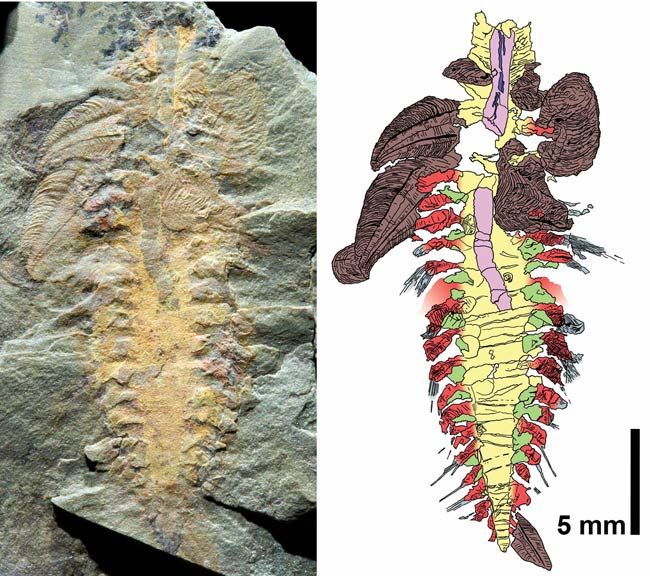Fossil of Extinct Armored Worm Discovered

Scientists have discovered the first complete fossilized body of an extinct armored worm, solving a mystery about the full animal that had been known only by some of its parts.
Paleontologists have long been puzzled by these bizarre critters, called machaeridians, because previous digs have turned up only bits of their armor — scales that ran along their back sides in rows.
With the new fossil, researchers can now identify the animals as part of the annelid worm family, which also includes modern sea mice, earthworms and leeches.
Scientists first found evidence of this creature 150 years ago, but until now were mystified about its body shape and relationship to other species, living or dead. This finding is detailed in the Jan. 10 issue of the journal Nature.
Machaeridians went extinct about 300 million years ago, before dinosaurs inhabited the Earth. They had no backbone and were tiny — the new specimen is only an inch long.
Discovered in Morocco by Ghent University graduate student Peter Van Roy, who collaborated with Yale University geologist Derek Briggs and his graduate student, Jakob Vinther, the fossil contains soft body parts in addition to durable scales, like those previously found. The presence of limb-like extensions on the body with furry bristles on them told the scientists that this creature was an annelid.
It's very rare to find the soft parts of the body preserved, Briggs said. "It has to be buried quickly," he told LiveScience. "You have to get minerals forming and preserving the outline before the animal decays completely."
Sign up for the Live Science daily newsletter now
Get the world’s most fascinating discoveries delivered straight to your inbox.
- Video: How to Time Travel!
- Image Gallery: Dinosaur Fossils
- Top 10 Amazing Things You Didn't Know About Animals













